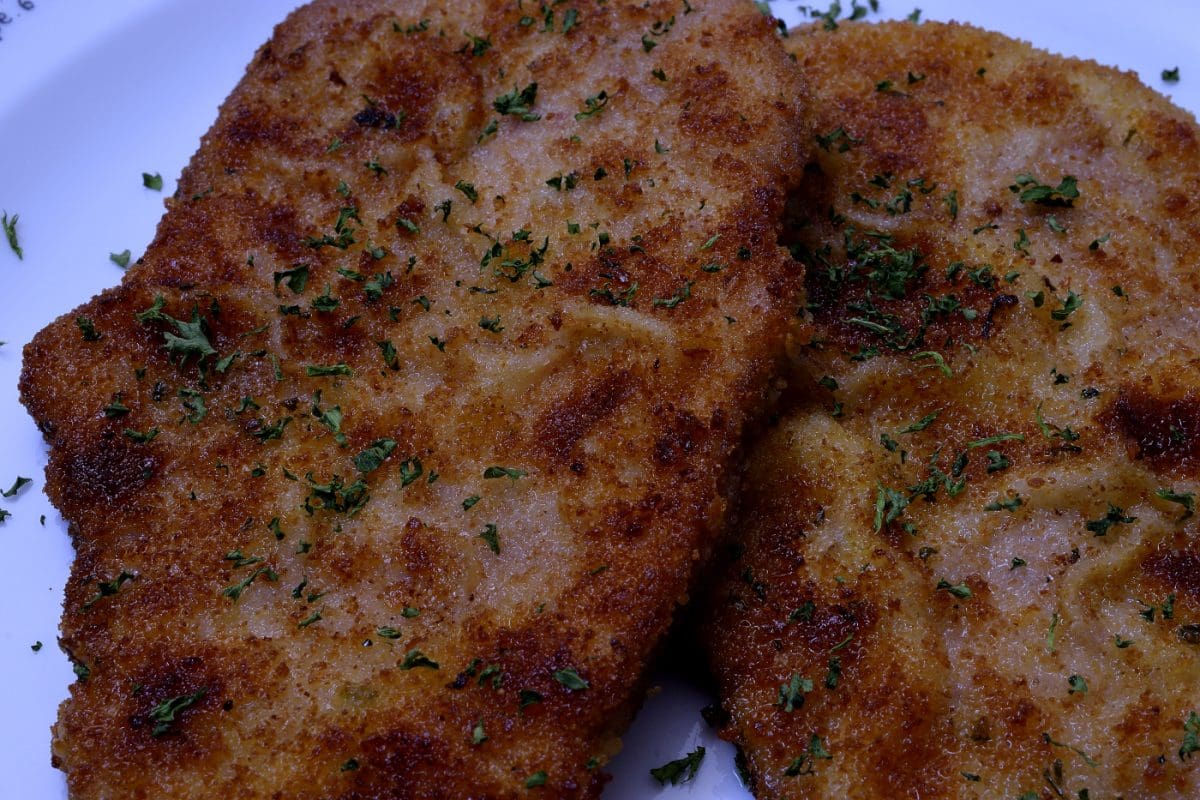Actual prep time: 1 hour
Serves 4-10+
Level of difficulty 2.75
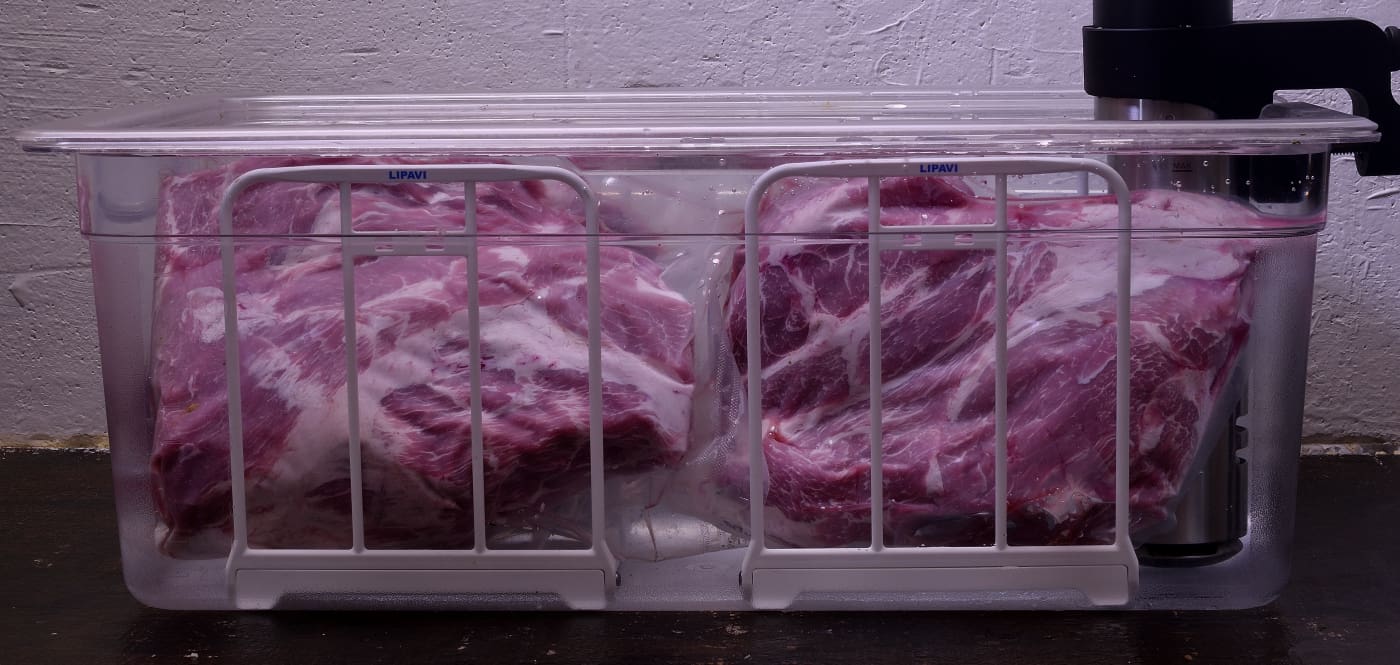
Procedure:
Preheat the sous vide bath to 183 F/84 C. This temporary/introductory temperature gives us a head start on bringing the sub primal roast up to the optimum internal temperature. Once a sealed roast is submerged into the bath, the temperature is immediately lowered to 135 F/57 C. Reducing the temperature when you stage the roast into the bath limits shrinkage, moisture loss and overcooking.
Seal the pork into heat rated vacuum bags. Within certain limits, the size of the roast does not matter for sous vide processing. A full sized roast may not fit in a standard sized bag without being cut into smaller pieces. This is a wise alternative. The time and temperature parameters remain exactly the same. Sous vide times and temperatures are less affected by bulk and are more dependent on the shortest distance from the surface to the geometric center of the protein.
Once you have sealed the roast in the appropriate pouch, submerge fully into the sous vide bath. Remember to
LOWER THE TEMPERATURE! TO 135 F/57 C.
Set the timer for anywhere between 22 and 26 hours. Sous vide is very forgiving, and there is no “moment” before which the roast is under cooked or after which it is ruined. Temperatures should always be used with attention to precision. When the processing time has elapsed, shock the roast(s) in iced water until they achieve 70 F/21 C. This is a very important safety procedure for roasts of this size–whether you are processing sous vide or not. A roast (or a turkey) of this size should NEVER be cooled at room temperature–it just takes too long to meet established safety guidelines.
How can you tell when the internal temperature of such a large roast has achieved 70 F/21 C? That is an excellent question.
Be cool, Man
The packaged roast is first submerged in a container of iced water that is at least twice the volume of the roast. Without explaining the details of how this is calculated, consider that meat is almost the same density as water. In this case, we use a vessel or sink that can hold at least 3 gallons/12 liters of cold water. One way to do this is by siphoning the water out of the sous vide bath and replacing it with iced water from the tap. The ability to do this depends on the logistics of your station/kitchen.
Then what?
Regardless of its size, submerge the roast in the filled vessel/sink. Wait until the ice has all melted. The temperature of the water will be approximately 70 F/21 C. Return in 15 minutes and use a probe or infrared thermometer to measure the temperature of the water. If it is above 70 F/21 C, then the roast is not completely chilled. Drain the vessel/sink, refill with cold tap water and come back in 15 minutes. Repeat this process until the water steadies at 70 F/21 C. Then you will know that it is safe to refrigerate the roast at 40 F/4 C.
On the day of service.
Submerge the entire cold package for 5-10 minutes in a preheated sous vide bath or hot tap water (110+ F/44+ C). This will fully melt the gel. Cut one of the corners of the bag and drain the juices. Set aside. Click HERE to learn how to clarify the juices for use in any recipe that calls for stock or water. Finish opening the bag and remove the roast from bag. Pat the roast dry with paper towels.

Pictured: This is a boneless pork shoulder that has been cut in half before sous vide processing. The removal of the bone creates a large piece of meat that “folds open.” This gives the enthusiast choices as to the size and shape of his/her cutlets.

Above: these slices cut from the roast are approximately 0.5″/13 mm thick, creating a pork cutlet familiar in appearance to most diners.
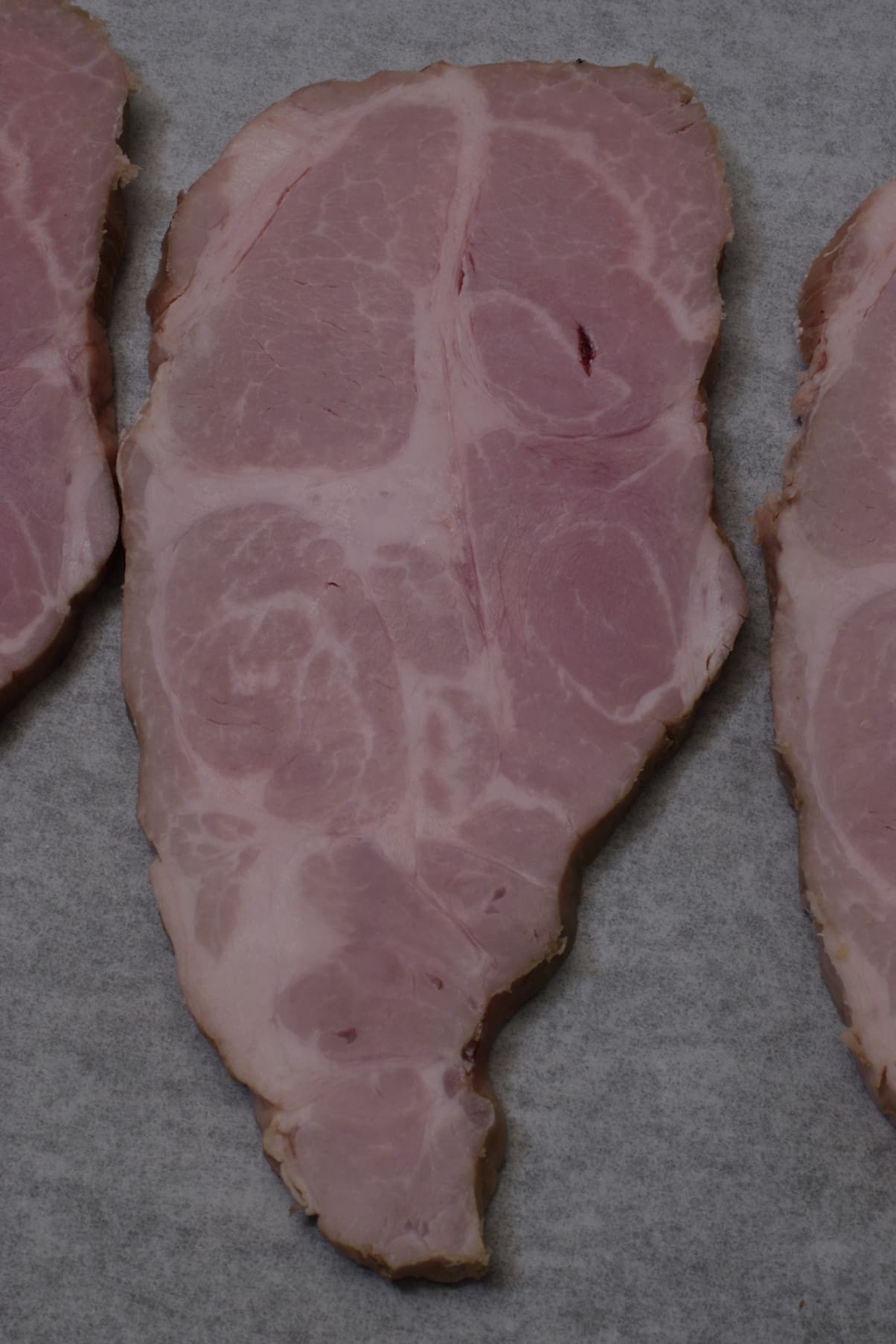
The actual size of the slices is up to the practitioner–thicker slices will give you a more “steak-like” appearance, as seen below:
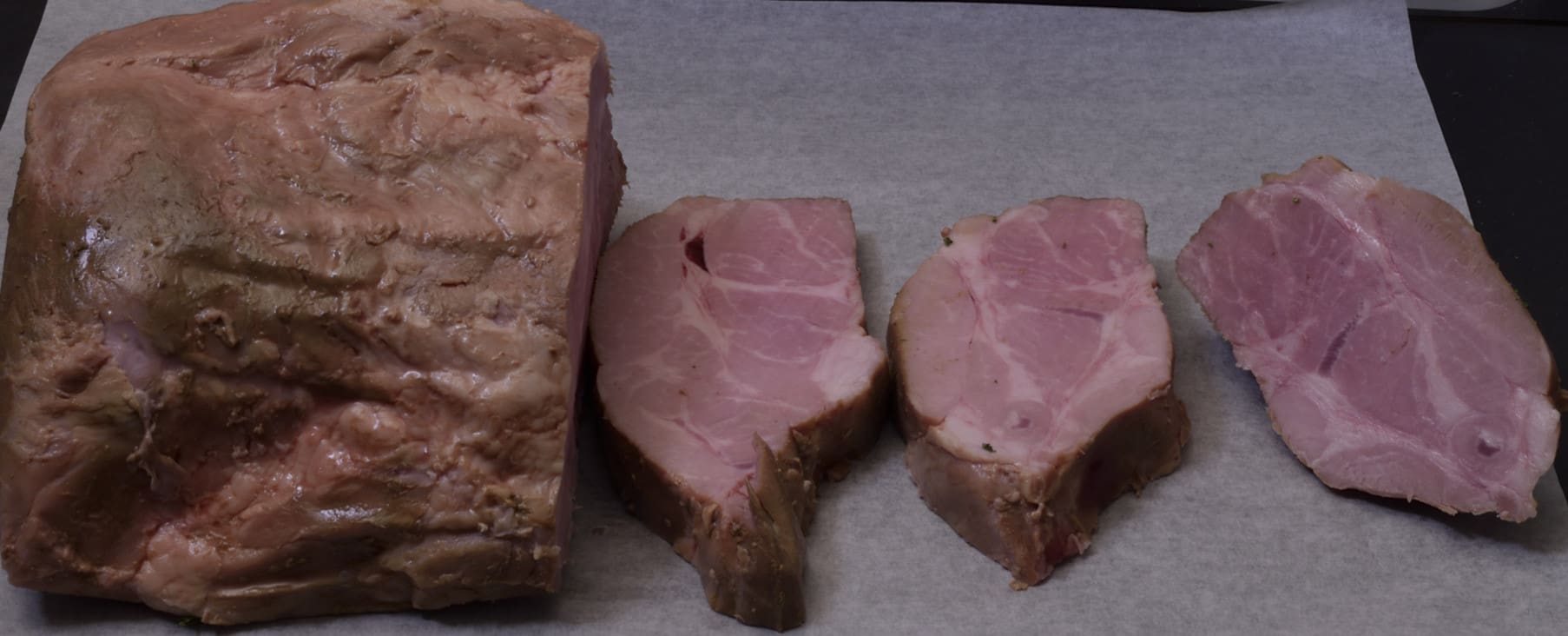
The thicker slices can also be breaded and fried, grilled, barbecued, etc. Moving on! Spread the cutlets out on butcher paper–this helps to prevent the breading process from becoming messy.
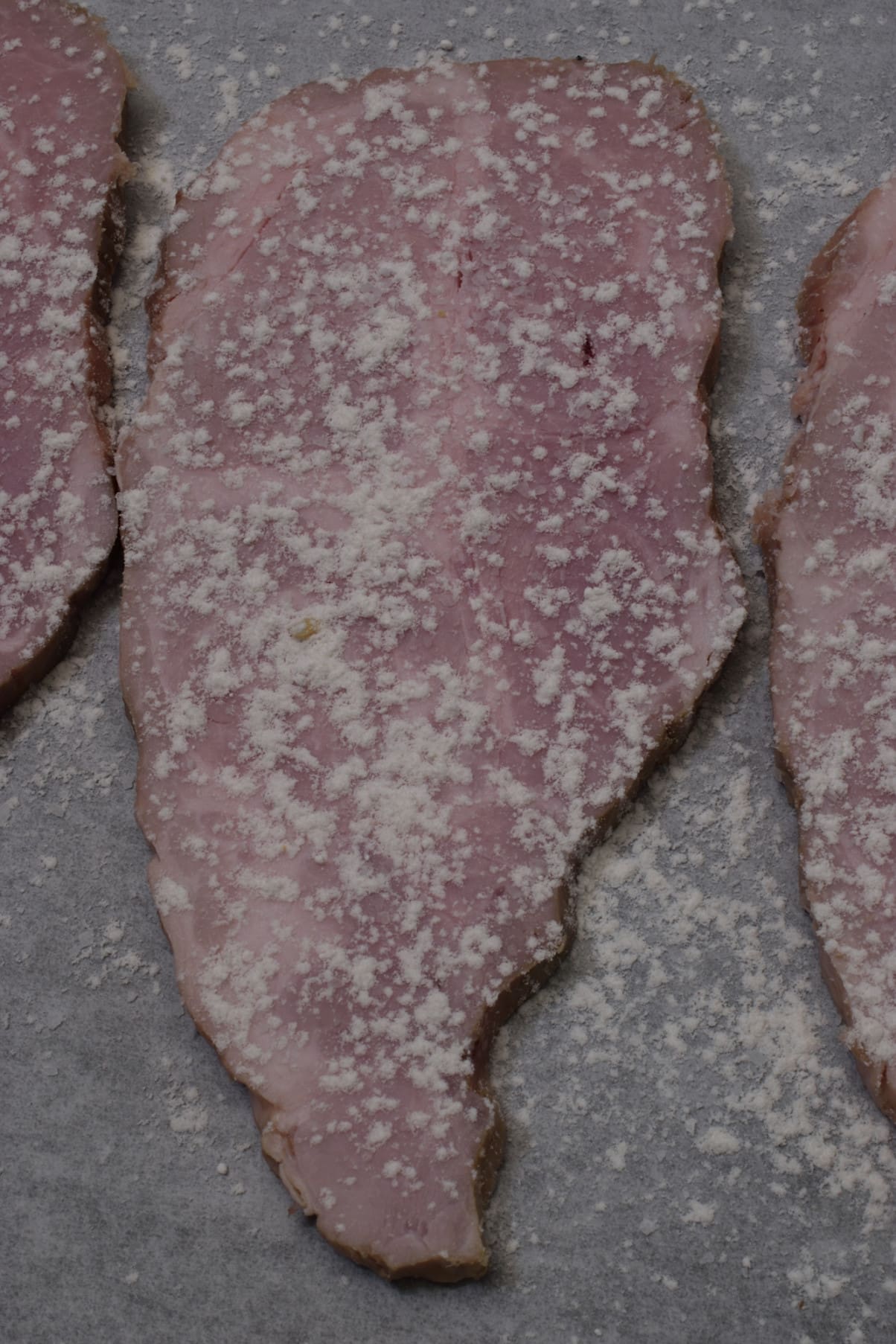
Sprinkle the cutlets lightly with kosher salt and flour. Beat the egg with 1 oz/30 ml water.
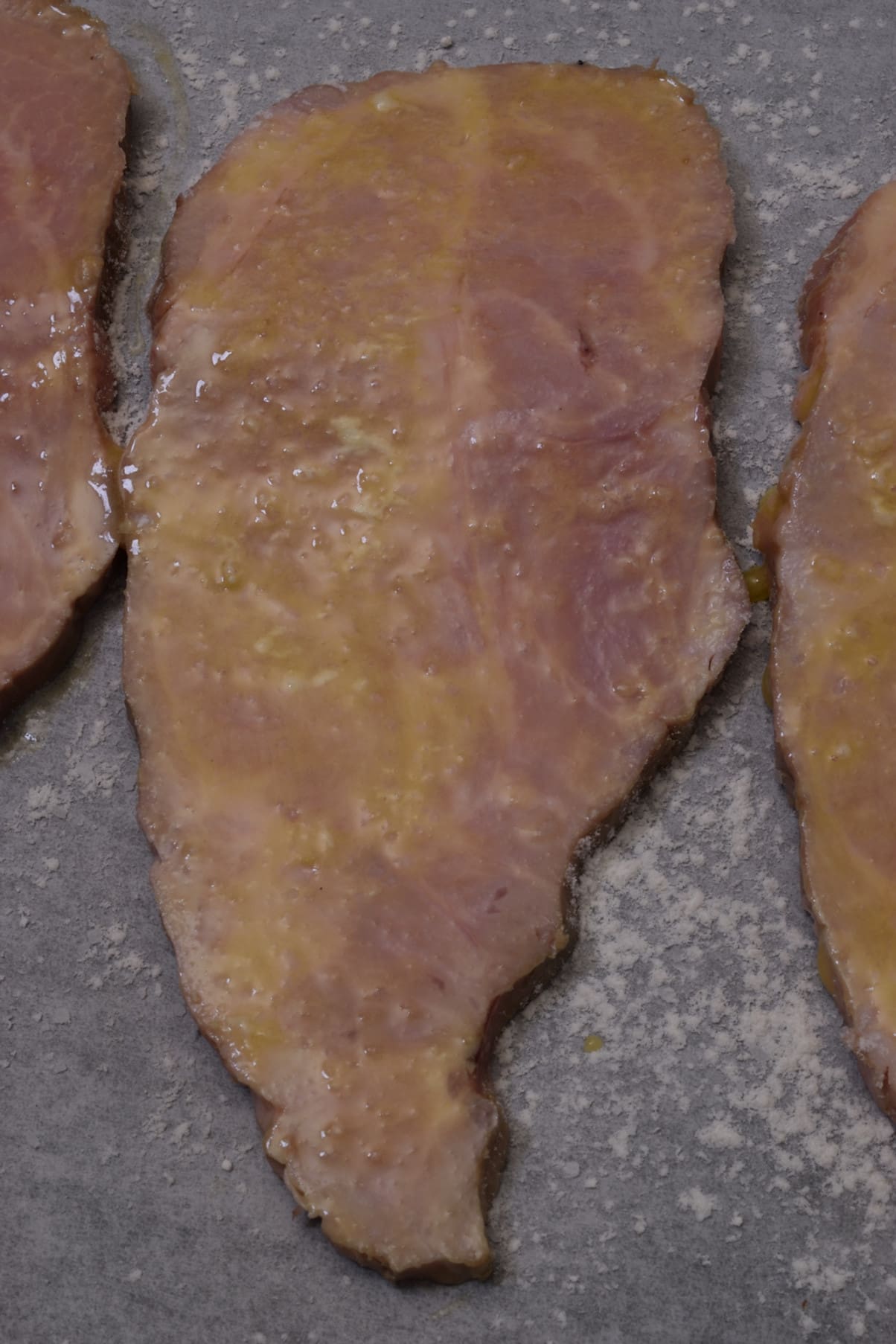
Use the pastry brush to coat one surface of the cutlet with the beaten egg.

Sprinkle generously with the crumbs, pat down lightly.

Turn the cutlets over and repeat the breading process.

Make sure to sprinkle generously with crumbs.

Allow to rest for a few minutes before stacking/shingling the cutlets onto a conveniently sized container or on a plate. Sprinkle with crumbs to make sure the surfaces remain dry. Fold up the butcher paper and discard!
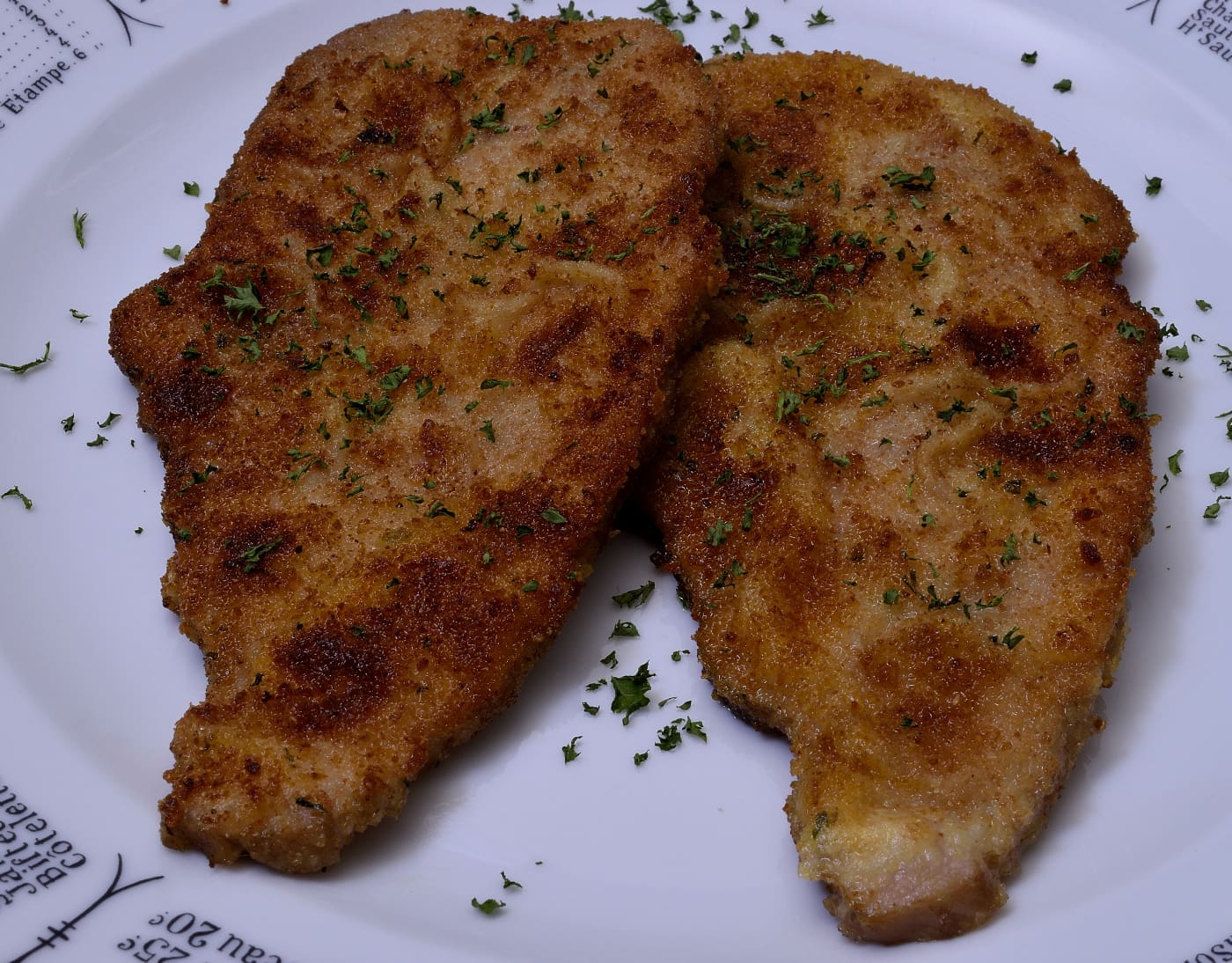
Heat the skillet to approximately 300 F/150 C BEFORE adding enough oil to generously coat the bottom of the pan. Fry the cutlets one or two at a time until brown. Use a spatula to carefully flip the cutlets. Be careful not to crowd the pan, this cools the surface and causes the breading to fall off of the cutlets.
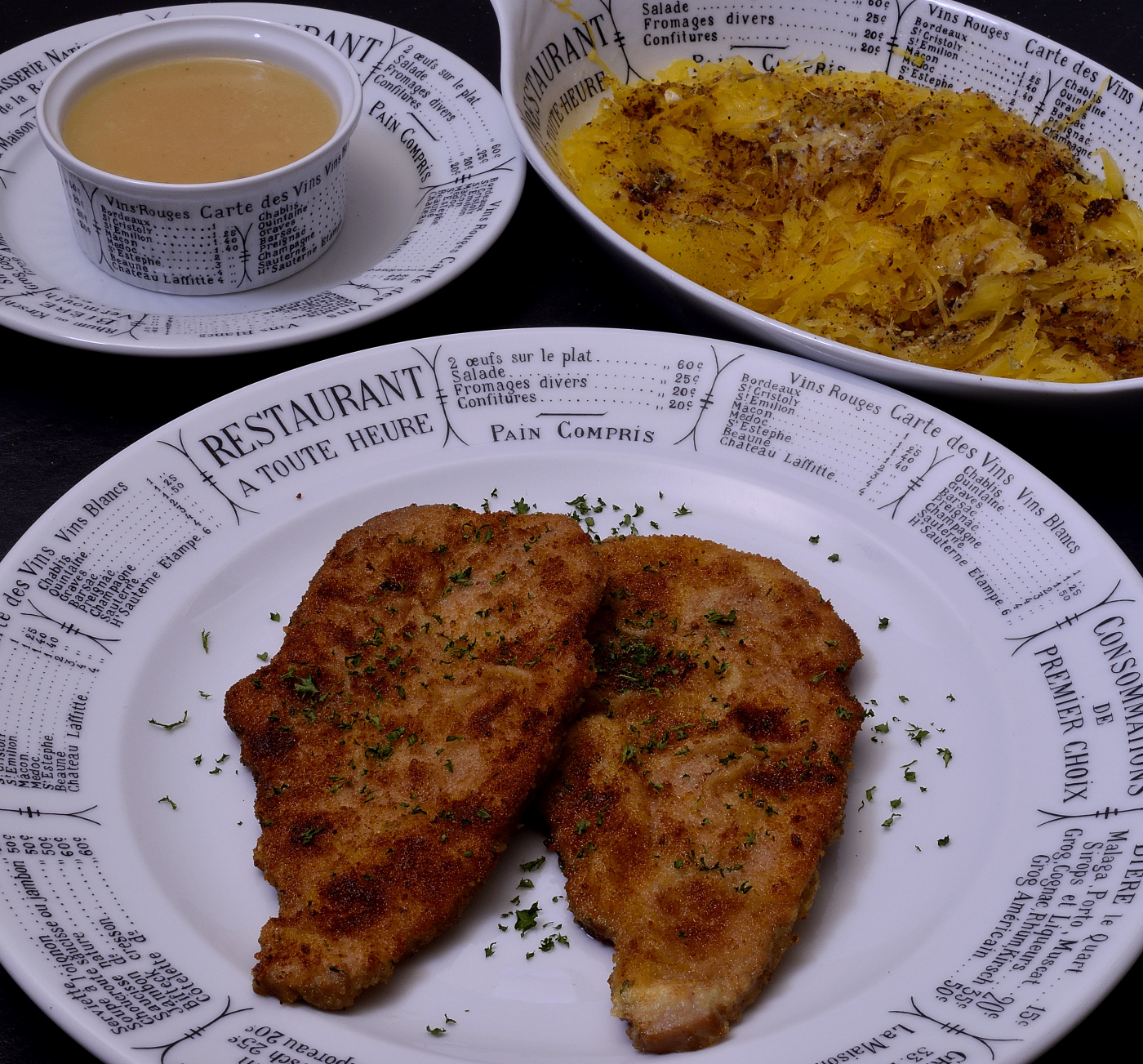
Above and below: plated and served with sous vide spaghetti squash and lightly thickened sous-jus.
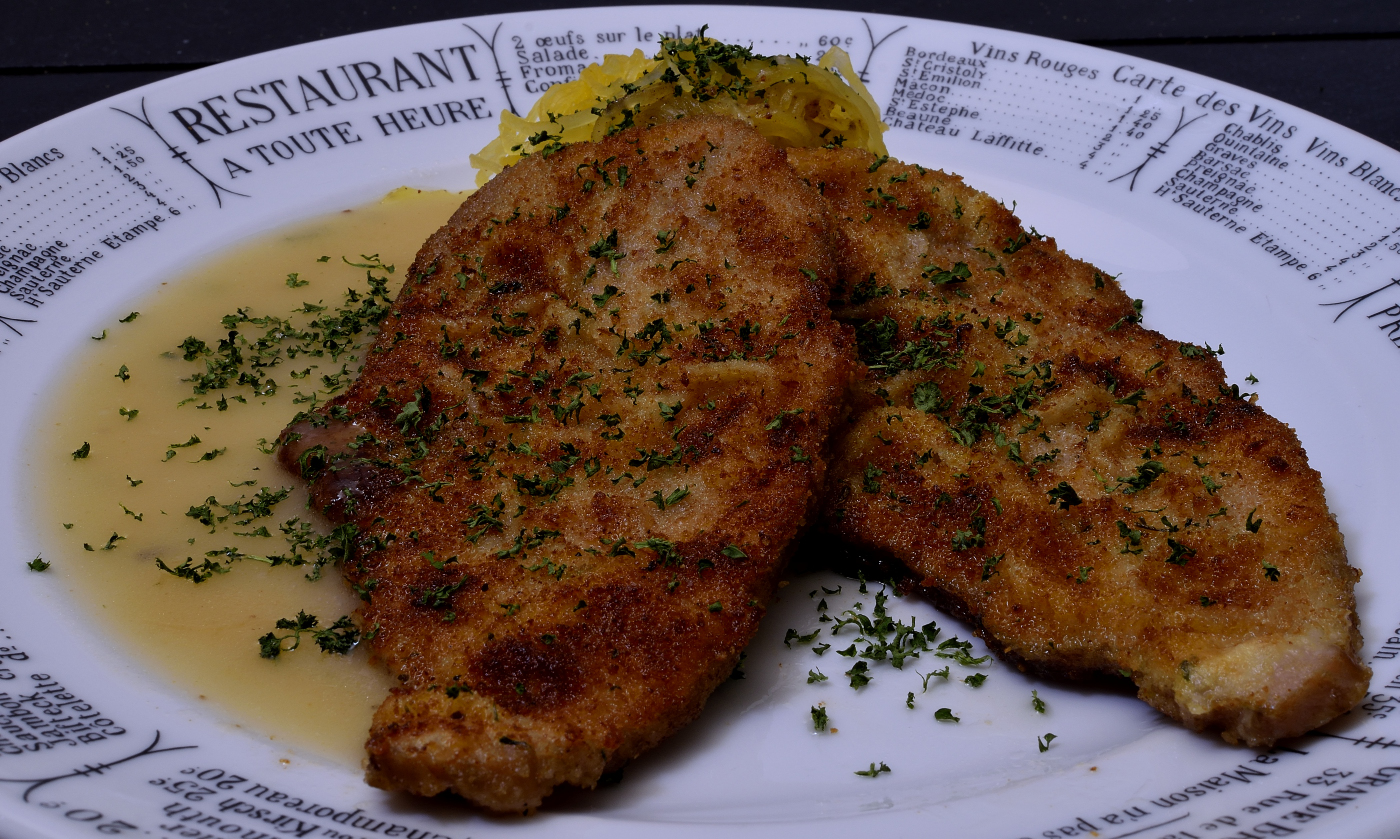
Norm King
Epilogue:
Sous vide spaghetti squash:
Peel the squash and cut into thick slices. Remove seeds. Vacuum seal and sous vide process at 183 F/84 C for thirty minutes.
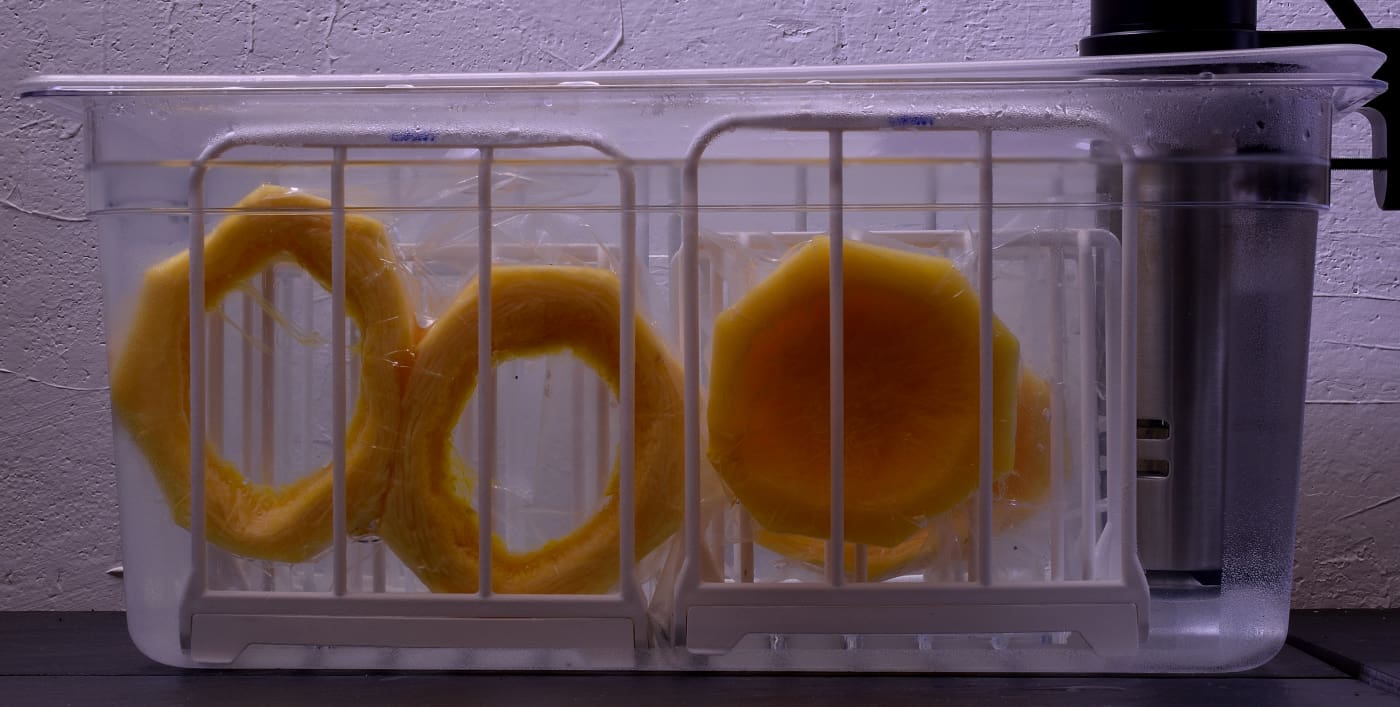
Shock in iced water to 70 F/21 C and refrigerate at 40 F/4 C. Remove from pouch and separate the strings with two forks or clean hands.
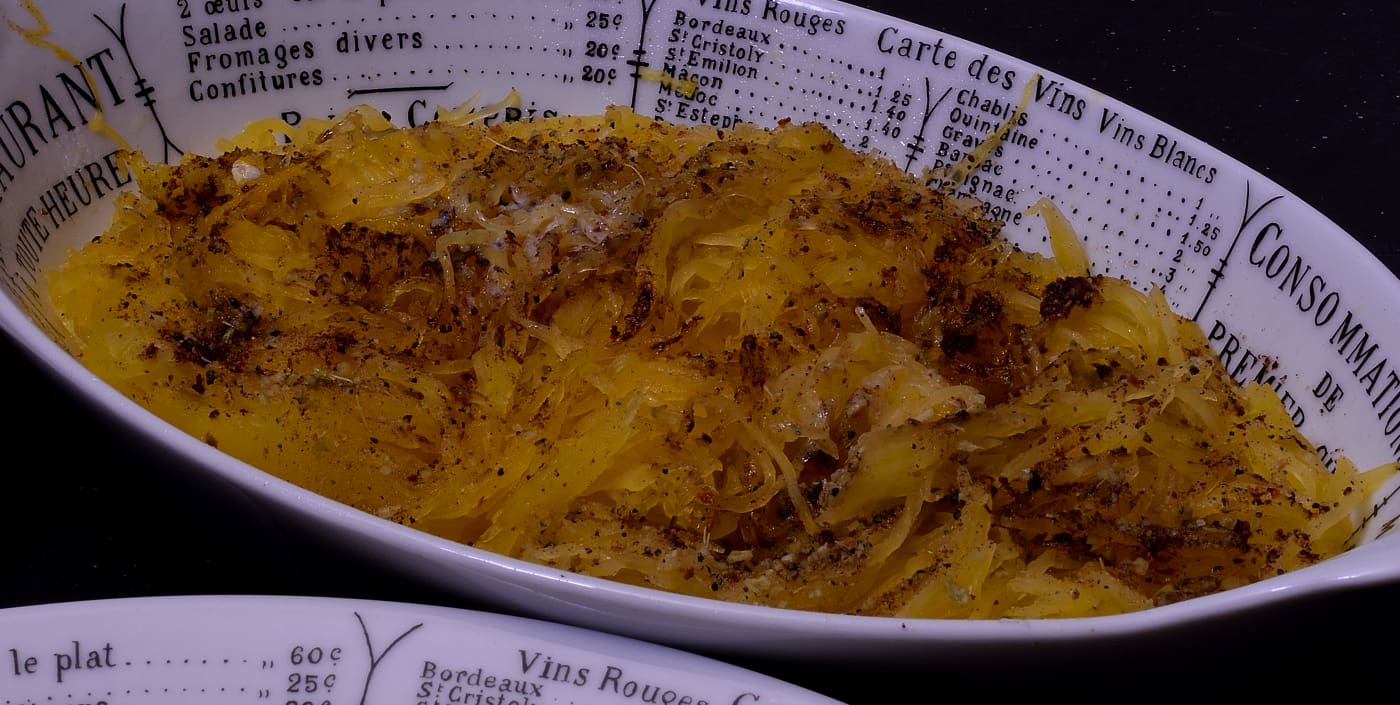
Arrange in an oiled cocotte and season with a pinch of salt, sugar, and spices of your preference–nutmeg, cinnamon, pumpkin pie spice, etc. We used cardamon and Chinese anise. Dot with butter and bake at 350 F/176 C or heat in a microwave oven.
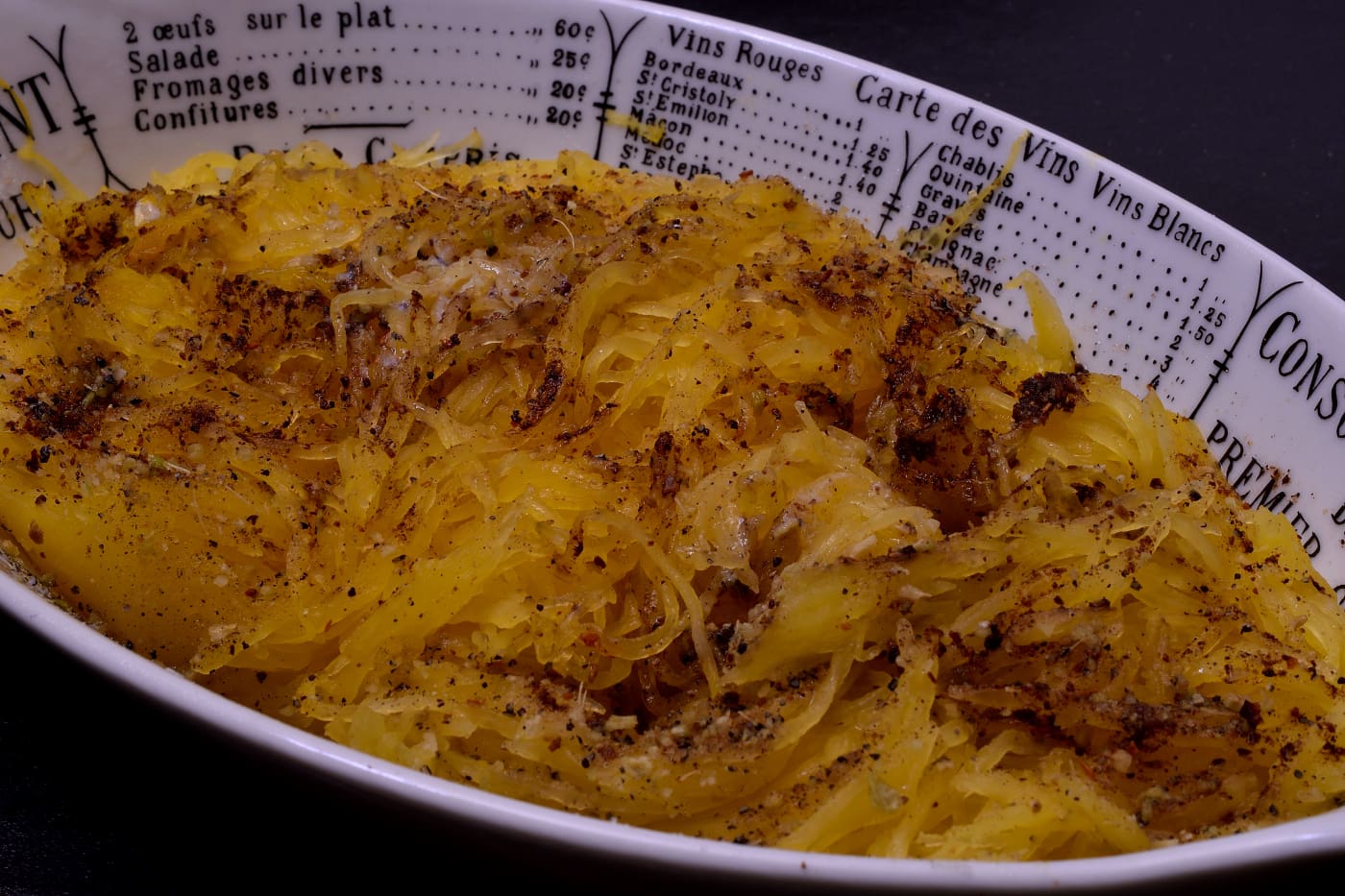
The sous vide processing does an excellent job of maintaining the structural integrity of the strings!
Norm
